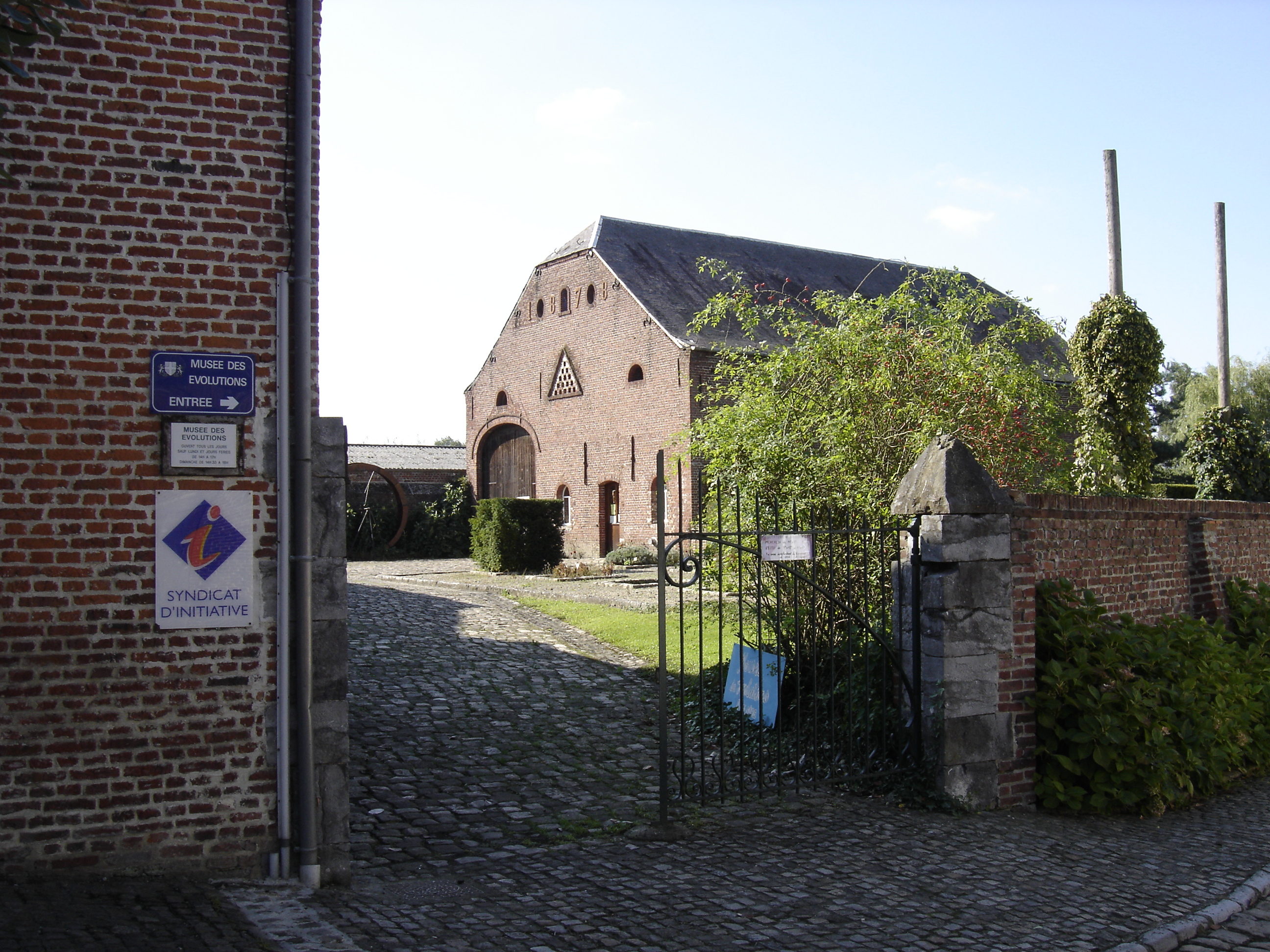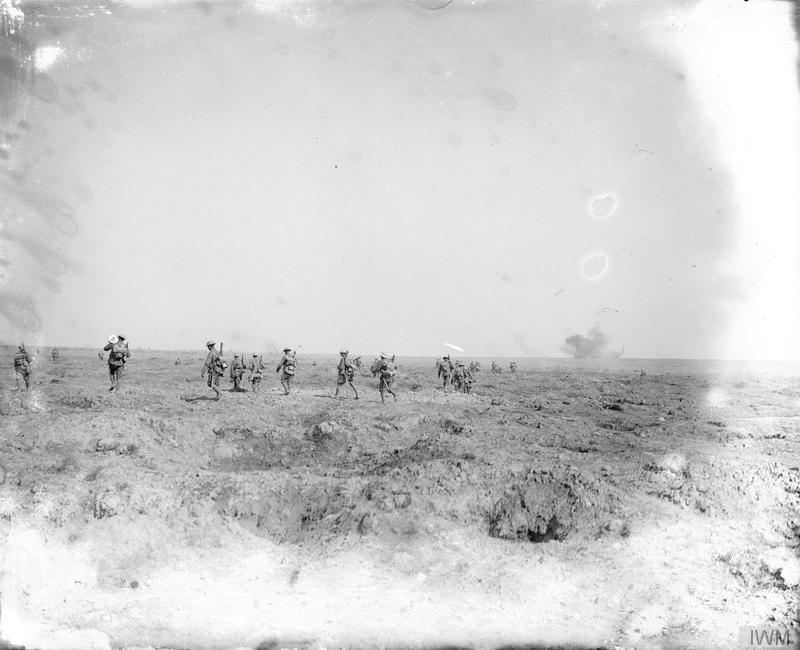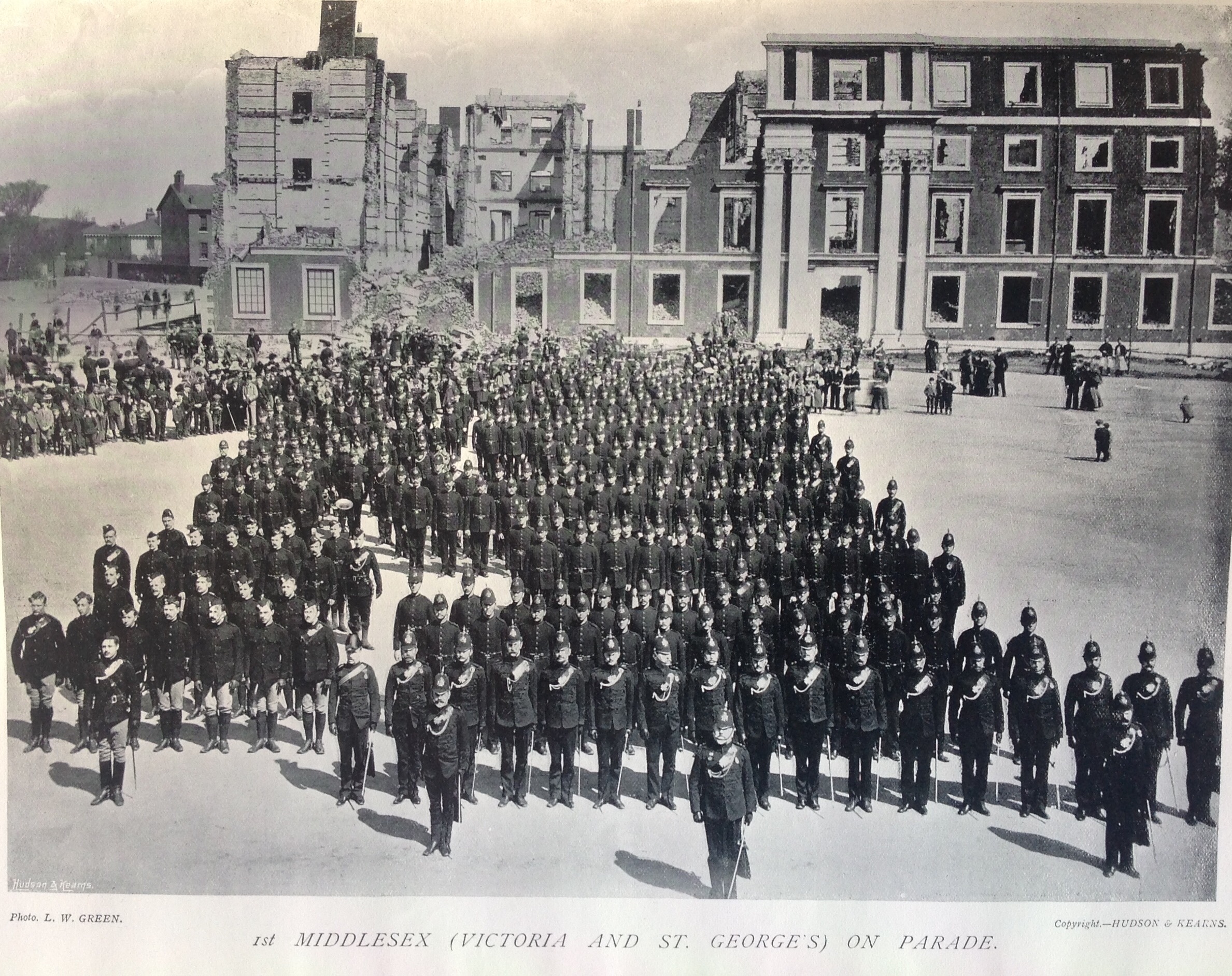|
Frederick William Hedges
Captain Frederick William Hedges (6 June 1896 – 29 May 1954) was a British recipient of the Victoria Cross, the highest and most prestigious award for gallantry in the face of the enemy that can be awarded to British and Commonwealth forces. A soldier with The Bedfordshire Regiment during the First World War, he was awarded the VC for his actions on 24 October 1918, during the Battle of the Selle. Early life Frederick Hedges was born on 6 June 1896 at Umballa in India, the seventh of nine children. His father was serving in the British Army as a bandmaster. By 1901, the Hedges family was living in Hounslow, Middlesex. He was educated at Grove Road Boys' School, and Isleworth County School. First World War On the outbreak of the First World War, Hedges volunteered for the British Army and was posted as a rifleman to the 9th (County of London) Battalion, London Regiment (Queen Victoria's Rifles). The regiment was part of the 13th Infantry Brigade, 5th Division, and in Novem ... [...More Info...] [...Related Items...] OR: [Wikipedia] [Google] [Baidu] |
Umballa
Ambala () is a city and a municipal corporation in Ambala district in the state of Haryana, India, located on the border with the Indian state of Punjab and in proximity to both states capital Chandigarh. Politically, Ambala has two sub-areas: Ambala Cantonment (also known as Ambala Cantt) and Ambala City, eight kilometres apart, therefore it is also known as "Twin City". It has a large Indian Army and Indian Air Force presence within its cantonment area. It is located 200 km (124 mi) to the north of New Delhi, India's capital, and has been identified as a counter-magnet city for the National Capital Region to develop as an alternative center of growth to Delhi. Ambala separates the Ganges river network from the Indus river network and is surrounded by two rivers – Ghaggar and Tangri – to the north and to the south. Due to its geographical location, the Ambala district plays an important role in local tourism, being located south of Chandigarh, nor ... [...More Info...] [...Related Items...] OR: [Wikipedia] [Google] [Baidu] |
Victoria Cross
The Victoria Cross (VC) is the highest and most prestigious award of the British honours system. It is awarded for valour "in the presence of the enemy" to members of the British Armed Forces and may be awarded posthumously. It was previously awarded by countries of the Commonwealth of Nations, most of which have established their own honours systems and no longer recommend British honours. It may be awarded to a person of any military rank in any service and to civilians under military command. No civilian has received the award since 1879. Since the first awards were presented by Queen Victoria in 1857, two-thirds of all awards have been personally presented by the British monarch. The investitures are usually held at Buckingham Palace. The VC was introduced on 29 January 1856 by Queen Victoria to honour acts of valour during the Crimean War. Since then, the medal has been awarded 1,358 times to 1,355 individual recipients. Only 15 medals, of which 11 to members of the Britis ... [...More Info...] [...Related Items...] OR: [Wikipedia] [Google] [Baidu] |
The London Gazette
''The London Gazette'' is one of the official journals of record or government gazettes of the Government of the United Kingdom, and the most important among such official journals in the United Kingdom, in which certain statutory notices are required to be published. ''The Gazette'' is not a conventional newspaper offering general news coverage. It does not have a large circulation. Other official newspapers of the UK government are ''The Edinburgh Gazette'' and ''The Belfast Gazette'', which, apart from reproducing certain materials of nationwide interest published in ''The London Gazette'', also contain publications specific to Scotland and Northern Ireland, respectively. In turn, ''The London Gazette'' carries not only notices of UK-wide interest, but also those relating specifically to entities or people in England and Wales. However, certain notices that are only of specific interest to Scotland or Northern Ireland are also required to be published in ''The London Gazette ... [...More Info...] [...Related Items...] OR: [Wikipedia] [Google] [Baidu] |
British Empire
The British Empire was composed of the dominions, colonies, protectorates, mandates, and other territories ruled or administered by the United Kingdom and its predecessor states. It began with the overseas possessions and trading posts established by England between the late 16th and early 18th centuries. At its height it was the largest empire in history and, for over a century, was the foremost global power. By 1913, the British Empire held sway over 412 million people, of the world population at the time, and by 1920, it covered , of the Earth's total land area. As a result, its constitutional, legal, linguistic, and cultural legacy is widespread. At the peak of its power, it was described as "the empire on which the sun never sets", as the Sun was always shining on at least one of its territories. During the Age of Discovery in the 15th and 16th centuries, Portugal and Spain pioneered European exploration of the globe, and in the process established large overse ... [...More Info...] [...Related Items...] OR: [Wikipedia] [Google] [Baidu] |
Bousies
Bousies () is a commune in the Nord department in northern France. History Bousies was part of County of Hainaut, an enclave in Cambrésis of which it was one of the 12 peerages. In 1007, Jean, Lord of Bousies, as peer of Cambrésis, pledged fidelity to bishop Herbin Ist, Count of Cambrai. In 1095, the bishop Gaucher put the castle of Bousies under siege, and lord Wiband helped by a few locals resisted for 3 days before the castle was taken and later destroyed. Rebuilt, it was again taken in 1185 and in 1665. Later, it was purchased by French statesman Marshal Mortier to be used as a hunting place. Sadly, its inheritors sold it to wreckers who destroyed it for building materials. Joseph-Gaspard de Tascher, Napoleon III's Maternal Great-grandfather, was born in Bousies. The family of Bousies became prominent in Scotland and can still be found in parts of Northern Ireland, but under the name of Bowsie after George Bousie changed the spelling in the 1800s because he didn't like th ... [...More Info...] [...Related Items...] OR: [Wikipedia] [Google] [Baidu] |
The Northamptonshire Regiment
The Northamptonshire Regiment was a line infantry regiment of the British Army in existence from 1881 until 1960. In 1960, it was amalgamated with the Royal Lincolnshire Regiment to form the 2nd East Anglian Regiment (Duchess of Gloucester's Own Royal Lincolnshire and Northamptonshire), which was amalgamated with the 1st East Anglian Regiment (Royal Norfolk and Suffolk), the 3rd East Anglian Regiment (16th/44th Foot) and the Royal Leicestershire Regiment to form the present Royal Anglian Regiment. History Formation The Northamptonshire Regiment was formed as part of the reorganisation of the infantry by the Childers Reforms when the 48th (Northamptonshire) Regiment of Foot (raised in 1741) and the 58th (Rutlandshire) Regiment of Foot (raised in 1755) were redesignated as the 1st and 2nd battalions of the Northamptonshire Regiment, with the regimental depot at Northampton. The regiment was initially based at Gibraltar Barracks in Northampton. As well as the two regular bat ... [...More Info...] [...Related Items...] OR: [Wikipedia] [Google] [Baidu] |
Lieutenant
A lieutenant ( , ; abbreviated Lt., Lt, LT, Lieut and similar) is a commissioned officer rank in the armed forces of many nations. The meaning of lieutenant differs in different militaries (see comparative military ranks), but it is often subdivided into senior (first lieutenant) and junior (second lieutenant and even third lieutenant) ranks. In navies, it is often equivalent to the army rank of captain; it may also indicate a particular post rather than a rank. The rank is also used in fire services, emergency medical services, security services and police forces. Lieutenant may also appear as part of a title used in various other organisations with a codified command structure. It often designates someone who is " second-in-command", and as such, may precede the name of the rank directly above it. For example, a "lieutenant master" is likely to be second-in-command to the "master" in an organisation using both ranks. Political uses include lieutenant governor in various g ... [...More Info...] [...Related Items...] OR: [Wikipedia] [Google] [Baidu] |
Felixstowe
Felixstowe ( ) is a port town in Suffolk, England. The estimated population in 2017 was 24,521. The Port of Felixstowe is the largest container port in the United Kingdom. Felixstowe is approximately 116km (72 miles) northeast of London. History The town is named after Felix of Burgundy, a saint and the first bishop of the East Angles in the seventh century. The old Felixstowe hamlet was centred on a pub and church, having stood on the site since long before the Norman conquest of England. The early history of Felixstowe, including its Roman, Anglo-Saxon, Norman and medieval defences, is told under the name of Walton, because the name Felixstowe was given retrospectively, during the 13th century, to a place which had expanded to a form beyond the boundaries of Walton alone. In the Doomsday book, for instance, only Walton is shown, and not Felixstowe, which at the time held little more than a few houses scattered over the cliff tops. Walton was a settlement on the River Orwell ... [...More Info...] [...Related Items...] OR: [Wikipedia] [Google] [Baidu] |
5th Infantry Division (United Kingdom)
The 5th Infantry Division was a regular army infantry division of the British Army. It was established by Arthur Wellesley, 1st Duke of Wellington for service in the Peninsular War, as part of the Anglo-Portuguese Army, and was active for most of the period since, including the First World War and the Second World War and was disbanded soon after. The division was reformed in 1995 as an administrative division covering Wales and the English regions of West Midlands, East Midlands and East. Its headquarters were in Shrewsbury. It was disbanded on 1 April 2012. Peninsular War The 5th Division during the Peninsular War under the command of General James Leith was present at most of the major engagements including the Battle of Bussaco, the Battle of Sabugal, the Siege of Almeida, the Battle of Badajoz, the Battle of Salamanca, the Battle of Vitoria, the Siege of San Sebastian, the Battle of Nivelle and the Battle of the Nive. Peninsular War order of battle The order of battl ... [...More Info...] [...Related Items...] OR: [Wikipedia] [Google] [Baidu] |
13th Infantry Brigade (United Kingdom)
The 13th Infantry Brigade was a regular infantry brigade of the British Army that saw active service during both the First and the Second World Wars. First World War The 13th Brigade was temporarily under the command of 28th Division between 23 February and 7 April 1915, when it was replaced by 84th Brigade from that Division and moved to the regular 5th Division. It served on the Western Front for most of the war except for a brief period in Italy. Order or battle Component units included: * 2nd Battalion, King's Own Scottish Borderers * 2nd Battalion, Duke of Wellington's (West Riding Regiment) ''(left January 1916)'' * 1st Battalion, Queen's Own (Royal West Kent Regiment) * 2nd Battalion, King's Own (Yorkshire Light Infantry) ''(left December 1915)'' * 1/9th (City of London) Battalion, London Regiment ''(joined November 1914, left February 1915)'' * 14th (Service) Battalion, Royal Warwickshire Regiment ''(joined December 1915, became Divisional Pioneers October 1918)'' * 1 ... [...More Info...] [...Related Items...] OR: [Wikipedia] [Google] [Baidu] |
Queen Victoria's Rifles
The 9th (County of London) Battalion, London Regiment (Queen Victoria's Rifles) was a Territorial Army infantry Infantry is a military specialization which engages in ground combat on foot. Infantry generally consists of light infantry, mountain infantry, motorized infantry & mechanized infantry, airborne infantry, air assault infantry, and marine i ... battalion of the British Army. The London Regiment (1908–1938), London Regiment was formed in 1908 in order to regiment the various Volunteer Force (Great Britain), Volunteer Force battalions in the newly formed County of London, and the Queen Victoria's Rifles were one of twenty six units brought together in this way. History Early history The Queen Victoria’s Rifles could trace their origins back to the old volunteer regiments of the Napoleonic Wars when the Duke of Cumberland's Sharpshooters were formed as a Corps of Riflemen on 5 September 1803. The regiment was raised as the 1st (Victoria Rifle Club) Middlese ... [...More Info...] [...Related Items...] OR: [Wikipedia] [Google] [Baidu] |
Isleworth And Syon School
Isleworth & Syon School (formerly Isleworth Grammar School) is a non-denomination secondary school and sixth form for boys aged 11 to 18 years old. Girls are admitted to the school's sixth form, which is part of a consortium with other secondary schools in the borough. The school is situated on Ridgeway Road, Isleworth, within the London Borough of Hounslow, England. It is close to the A4, just south of Osterley Park. It has many travel links including Isleworth railway station, Osterley tube station and London Buses History Isleworth & Syon School can trace its history to the establishment of a charity school in 1630, making it one of the oldest schools in the area. During the 18th century it became known as The Blue School. Due to expansion it became a boys' school and the girls were moved out to a separate building in North Street in 1870. An upper school was added in 1883 to educate older boys. It was used as a "model school" for trainee teachers from Borough Road College ... [...More Info...] [...Related Items...] OR: [Wikipedia] [Google] [Baidu] |

.jpg)



.jpg)

